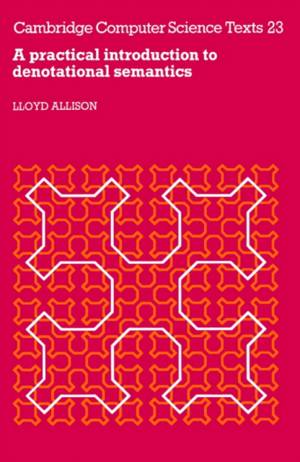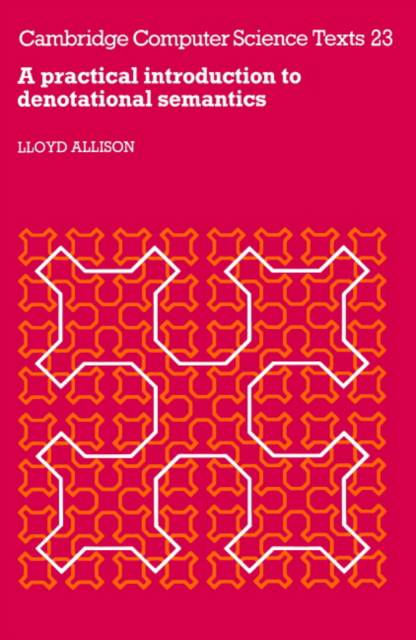
- Afhalen na 1 uur in een winkel met voorraad
- Gratis thuislevering in België vanaf € 30
- Ruim aanbod met 7 miljoen producten
- Afhalen na 1 uur in een winkel met voorraad
- Gratis thuislevering in België vanaf € 30
- Ruim aanbod met 7 miljoen producten
Zoeken
Omschrijving
This textbook is an introduction to denotational semantics and its applications to programming languages. Dr Allison emphasizes a practical approach and the student is encouraged to write and test denotational definitions. The first section is devoted to the mathematical foundations of the subject and sufficient detail is given to illustrate the fundamental problems. The remainder of the book covers the use of denotational semantics to describe sequential programming languages such as Algol, Pascal and C. Throughout, numerous exercises, usually in Pascal, will help the student practise writing definitions and carry out simple applications. The book culminates in discussing an executable semantics of the logic-programming language Prolog. Being an introduction, advanced undergraduates in computer science and graduates new to the subject will find this a readily accessible account of one of the central topics of computer science.
Specificaties
Betrokkenen
- Auteur(s):
- Uitgeverij:
Inhoud
- Aantal bladzijden:
- 148
- Taal:
- Engels
- Reeks:
- Reeksnummer:
- nr. 23
Eigenschappen
- Productcode (EAN):
- 9780521314237
- Verschijningsdatum:
- 30/01/1987
- Uitvoering:
- Paperback
- Formaat:
- Trade paperback (VS)
- Afmetingen:
- 154 mm x 229 mm
- Gewicht:
- 235 g

Alleen bij Standaard Boekhandel
+ 149 punten op je klantenkaart van Standaard Boekhandel
Beoordelingen
We publiceren alleen reviews die voldoen aan de voorwaarden voor reviews. Bekijk onze voorwaarden voor reviews.











